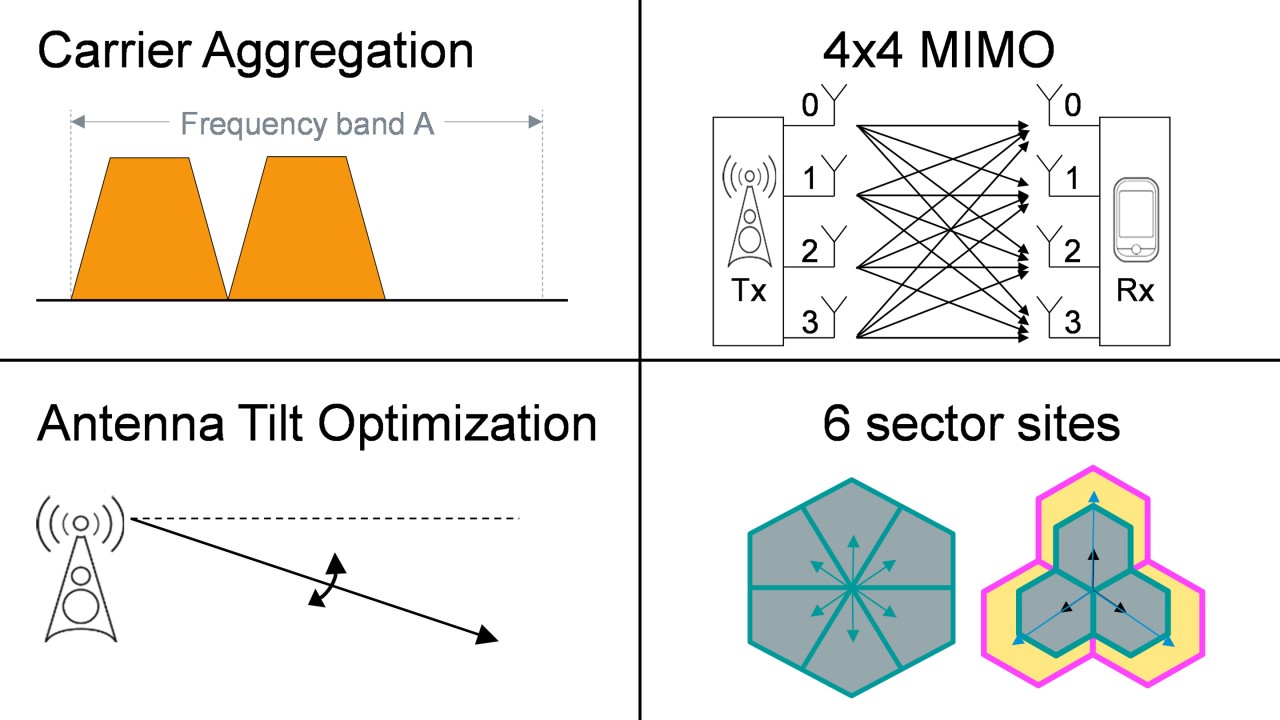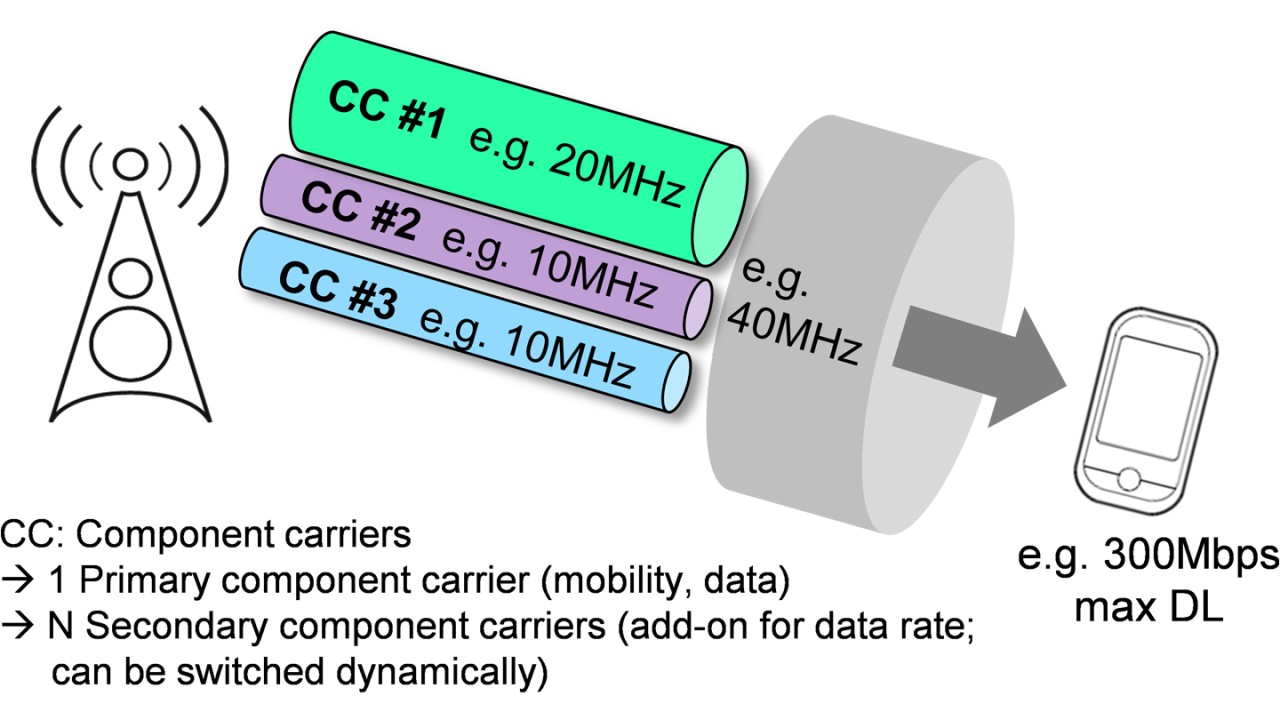Written by Arnd Sibila | December 16, 2016, updated August 2, 2024
Smart macro network enhancements: Carrier aggregation (part 1)
Carrier aggregation (CA) is one option to increase data throughput.
The popularity of app services among smartphone users poses a serious challenge to mobile operators because data consumption is soaring. Continuous investments in the networks by mobile network operators are in evitable to merely transfer the sheer amount of data. So, how can network operators best address these increasing network capacity and performance demands? Carrier aggregation (CA) is one option.








